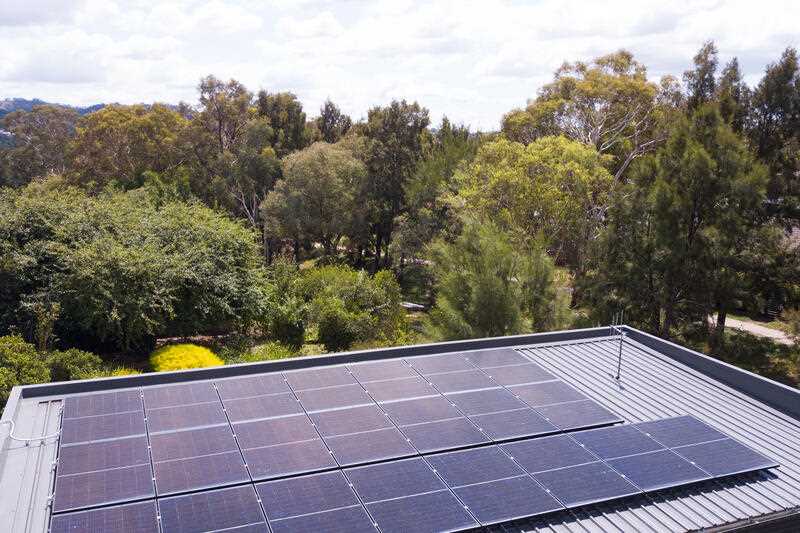Cheap loans for energy upgrades and nation-building new industries have been backed in the budget to permanently reduce power bills and create clean jobs.
As well as targeted energy bill relief for households, there is a plan for communities to take advantage of savings from smarter power use and the global boom in clean energy.
Treasurer Jim Chalmers acknowledged the global investment landscape for renewable energy and low-carbon manufacturing had changed with “significant international policies” requiring a $4b top-up to protect Australia’s transformation.
The 2023/24 budget takes the Albanese government’s “renewables superpower” investment to $40b.
As Australia’s first “electrification budget”, it was a profound reset of climate and energy policy after a lost decade, Rewiring Australia co-founder Saul Griffith said.
“It positions us to become a world leader in the efficient electric energy system of the future,” Dr Griffith said.
Climate Change and Energy Minister Chris Bowen said the measures would cut emissions, reduce pressure on power bills and set Australia up as a renewable energy powerhouse for jobs, exports and growth.
A new Powering Australia Industry Growth Centre will support local manufacturing of renewable energy technology.
Households and businesses will access $1.6b in low-cost loans for energy upgrades to improve energy use and pay less on power bills.
Some $1b will go to the federal Clean Energy Finance Corporation to work with banks and other lenders to upgrade homes with battery-ready solar panels, appliances and other equipment.
“This will help more than 110,000 households lower their energy bills,” Mr Bowen said.
The Household Energy Upgrades Fund includes $300m to retrofit social housing, co-funded with states and territories, which is expected to slash up to one-third of the properties’ energy consumption.
“These are the Australians who can’t afford – and would benefit most – from energy upgrades,” Mr Bowsen said.
Up to 3.8 million small and medium-sized businesses will have access to a tax incentive for one year from July 1 to help unlock energy savings.
Energy regulators get $80m over four years so energy markets can supply reliable, secure and affordable energy.
The already announced national Net Zero Authority will make sure workers in traditional industries don’t miss out.
“In the global race for new energy jobs and investment, we were falling behind the pack,” Mr Bowen said.
To stop the capital and brain drain to the United States, where generous clean energy tax breaks are available, the budget papers also include $2b to bankroll flagship renewable hydrogen projects.
The “hydrogen headstart” is intended to bridge the gap for projects that are not yet commercial, plug into new global supply chains, and put Australia on course for adding up to a gigawatt of electrolyser capacity by 2030.
Some $38.2m for a guarantee of origin scheme will certify renewable energy and track and verify emissions from clean energy products – in particular hydrogen – to accelerate investment in Australian hydrogen.
Citing “intensifying global competition” in clean energy, the budget papers allocate $5.6m to analysis in 2023 on how to boost the competitiveness of the industry and manufacturers.
Already agreed with states and territories, the budget also provides funding for initial auctions under the new Capacity Investment Scheme for clean, dispatchable power assets across the country.
Responding to calls to carve up the $1.9b Powering the Regions Fund, $600m will go to trade-exposed heavy industries who must cut emissions under the recently legislated safeguard mechanism.
Clean energy industries including green steel, cement, lime, aluminium and alumina are also on the list of winners, as are regional industrial facilities that need to decarbonise, including rail and aviation.
The measures build on the $20b Rewiring the Nation program, $800m in support for electric vehicles and $3b from the National Reconstruction Fund for renewables and low emission technologies.
ENERGY BILL RELIEF
Who is eligible:
* Pensioners, veterans, seniors and other concession card holders.
* Recipients of the carer allowance and family tax benefit.
* People in existing state and territory electricity concession schemes.
In NSW:
* More than 1.6 million households and 300,000 businesses will be eligible for energy rebates in the next financial year.
* NSW households will receive $500 and small businesses can get a $650 rebate.
* The price relief rebates will be delivered via energy companies and applied automatically to energy bills.
In VIC:
* More than 1.27 million households and 236,000 small businesses will be eligible for energy price relief from July 1.
* Households will get a $250 annual energy rebate on power bills, in addition to the $250 power saving bonus that will continue.
* Households will continue to access support through year-round electricity concession and the winter gas concession.
* Eligible small businesses will get a $325 rebate, and will receive it automatically if they are a “small customer”.
In QLD:
* More than 1.1 million households and 200,000 small businesses will be eligible for the energy bill relief from July 1.
* Households will receive an annual rebate of $500 and eligible small businesses can access $650.
* The rebates will be applied to household bills by energy companies.
* Small businesses who are classified as a “small customer” will get the relief automatically.
By Marion Rae in Canberra



